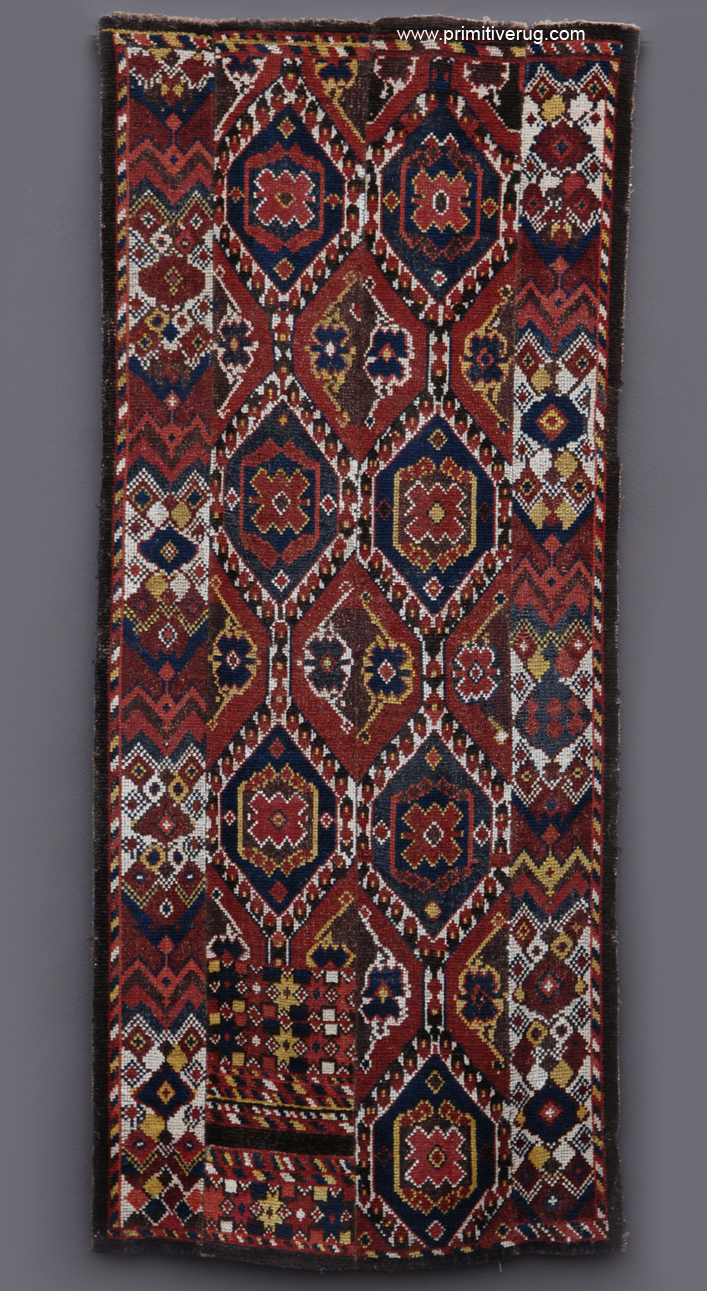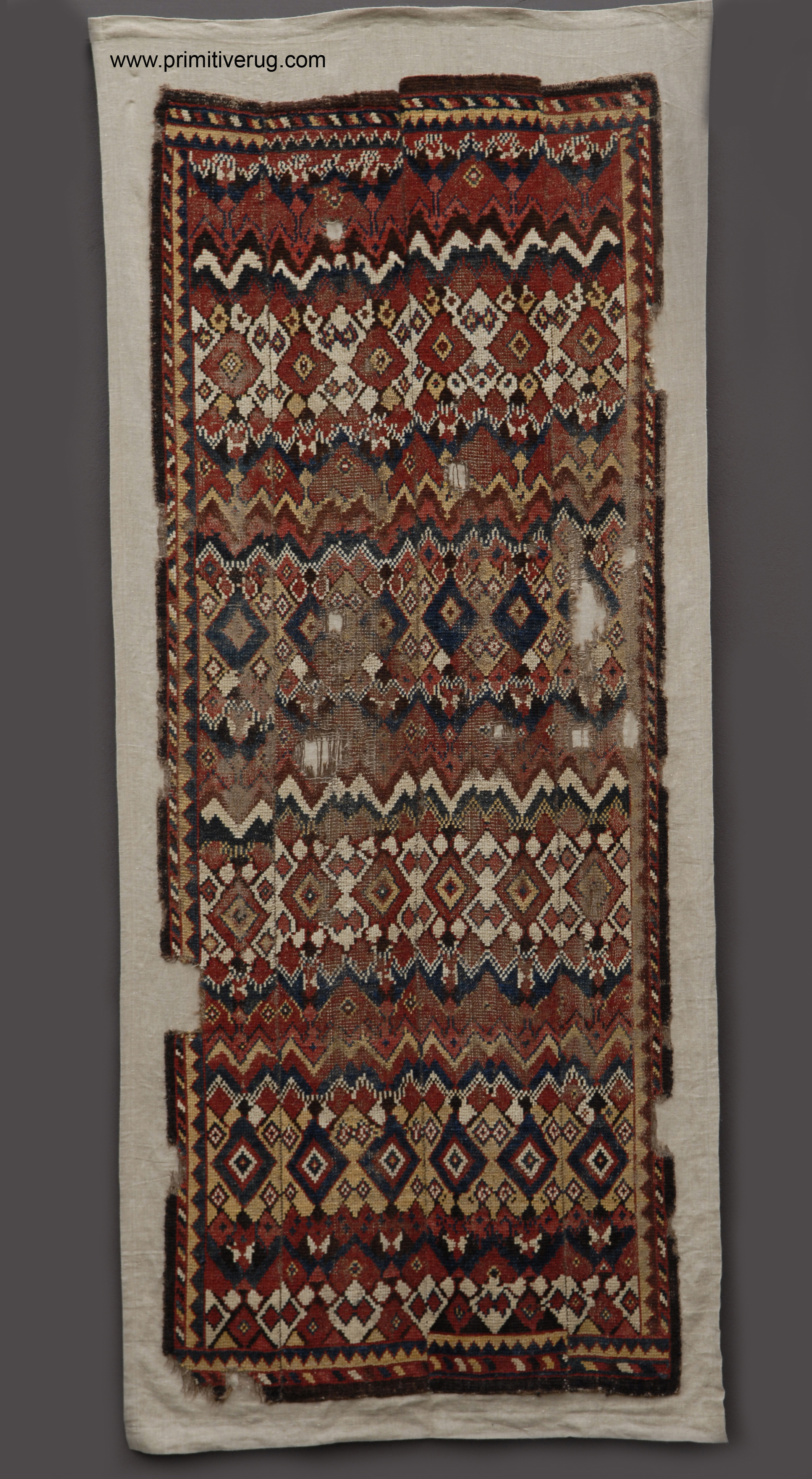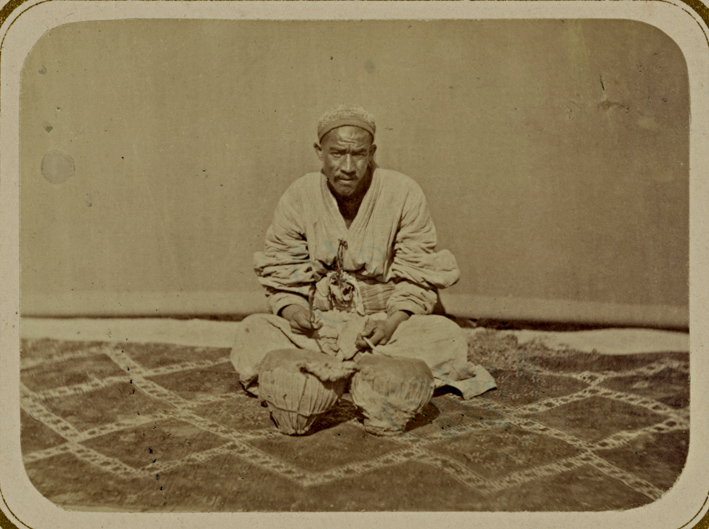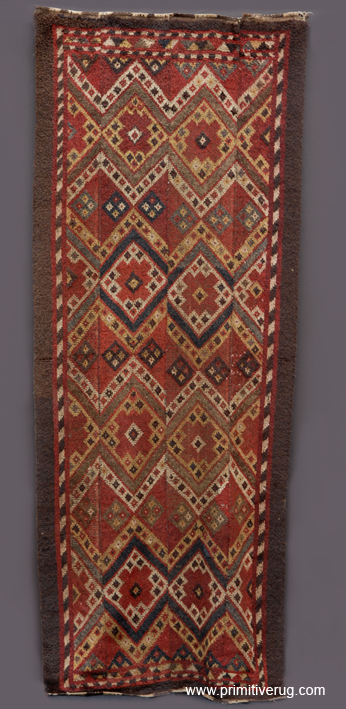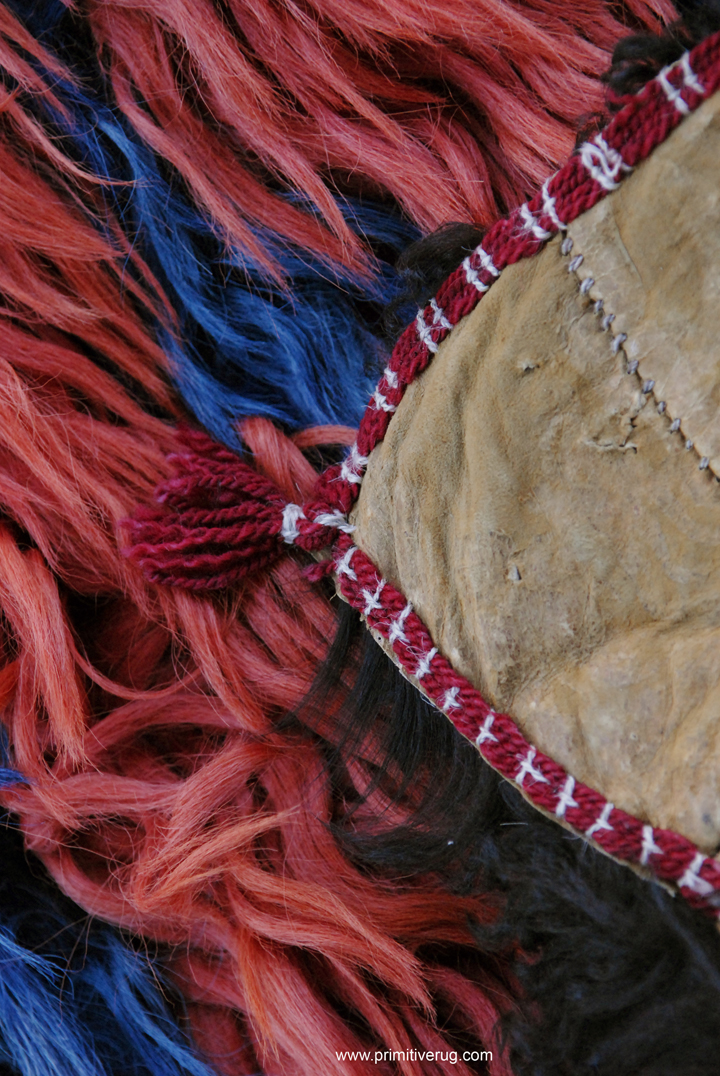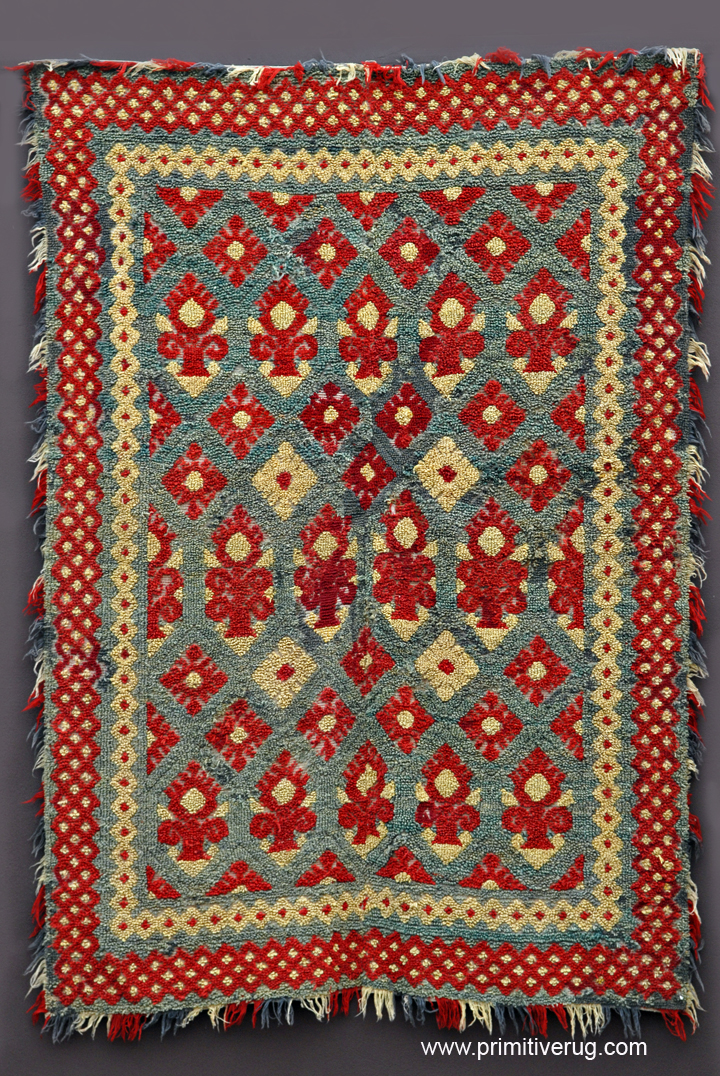
Alpujarra Rugs – Moorish Covers from Andalucia
Up for auction – intimate personal bed covers from Andalucia Spain: an Alpujarra “Rug”; Sotheby’s New York 1999. Description: “Inscriptions of Juan Sanchez at the top and Maria Cruz Vicente at the bottom”. Or this: an Alpujarras bed covering woven for the family “Antonio Mertines”. 1 Personal inscriptions attest to the uniqueness of Alpujarras rugs – private exclusive hand woven. The written history of these weavings from Eastern Andalucia is littered with references to rural peasants and artisans involved in craft and the creation of simple bed covers – custodians of a long tradition. Weaver’s lives intertwined in woven wool and cotton; inscriptions of names - woven birds, dogs, ducks, lions, flowers, flower baskets, trees, vases, combined with lattice borders or meandering flowers, grapes and leaves. Using a restricted colour palette, coarse looped pile on a woven foundation, minimalist and utilitarian, creating an intensely rich and personal narrative – intended for the home and never for sale. W Kent compares Alpujarras rugs to Central Asian, Persian, Turkish and Caucasian traditions – rugs woven by young women as part of their future dowry here confirmed by names, dates and terms of endearment. 2
A remnant of Moorish textile traditions, textile industries existed in Granada Province between tenth and fifteenth centuries. The region became the last stronghold of the Moors. Small villages and terraced farmlands cling to the side of the mountains on the Southern ranges of the Sierra Nevada, just sixty kilometers long and ten kilometers wide known as Las Alpujarras, a province of Granada. Arabic place names are littered throughout the Alpujarras along with examples of cubic architecture, reminiscent of Berber architecture in the Atlas Mountains of Morocco.
Alpujarra rugs were woven on narrow beam looms in two or three pieces then stitched together. In the rug used to illustrate this post thick two ply coloured wool inlaid pile wefts were used to create a shaggy looped pile surface, there are no "knots" just inlaid pile wefts, representing an early primitive rug pile technique.3 One or two shots are randomly inserted at various intervals along the shed depending on where the desired colour is used. The coloured wefts are drawn up over gauge rods, forming the loops that constitute the pile. Five or six gauge rods can be used at one time, they are withdrawn once the loops have been formed.4 The wefts used for the loops are laid one on top of the other and can be seen on the front and back of the rug, thus one colour may show on the front and a different colour on the back. Wefts (sometimes described as unbleached linen) ivory cotton singles with three shots forming balanced plain weave between inlaid pile wefts.
Sometimes long fringes are woven separately up to twenty centimetres long stitched on four edges in alternate colours from the main colours of the rug. Weavers often used only two colours some variations can include up to ten. Colours include turquoise, indigo, various shades of blue, yellow, a golden honey colour, white, black, cherry red, tomato red, deep yellow, cream, saffron yellow, lime green, and red.
Persian, Turkish, Gothic, Renaissance – motifs, religious symbols, names, the natural world, dates, interpreted and expressed throughout the centuries. Moorish traditions remained woven into the designs long after the Moors were expelled from Granada. Weaving of Alpujarras rugs continued up to the 19th century, featuring floral and animal designs with bright colours – Moorish echoes through time.
ALPUJARRA LOOPED-PILE RUG ANDALUCIA SPAIN, CIRCA 1860
Collection: The Author
Description:This example shows an abrashed turqoise blue green field – red and saffron yellow, aged patina with richly coloured geometric motifs two borders including a lattice outer border. Yellow red and turqoise fringe. Woven in two strips stitched together, areas of wear, some re-piling, old linen patches on reverse. Approximately 7 ft. 6 in. x 5 ft. 6 in. (228cm. x 167 cm.)
Warp: Ivory cotton.
Wefts: 3 shots Ivory cotton
“Pile Design wefts”: Looped wool
Sides: Plainweave, extra turquoise weft
Ends: Plainweave
Extract From ARTFACT.com
Christie's - London - 1996
LITERATURE Bernheimer, Otto: Alte Teppiche des 16.-18. Jahrhunderts der Firma L. Bernheimer, Munich, 1959, pl.126. The loop piled rugs woven on the Los Alpujarras hills south of Granada have been known for a considerable time. Early this century they were given more importance possibly than is accorded to them now. Vitall Benguiat for example thought one sufficiently important to include it in the most important section of his sale (The V. and L. Benguiat Collection of Rare Old Rugs. American Art Association sale catalogue. New York, 4 December 1925, lot 24 (ill.), date altered from 1803). Cornelia Bateman Faraday (European and American Carpets and Rugs, Michigan, 1929) devotes a considerable amount of space to them. The looms on which they were woven were narrow, necessitating their manufacture in (usually three) vertical panels which were then joined. The designs were often influenced by the Cuenca interpretations of Anatolian designs; the chrysanthemums in the present border are typical. Another feature which occurs in a number of examples is the central rectangular panel. This can be found surrounded by an inscription which is often dated, the Benguiat example already noted being an example. Another rug, in the Victoria and Albert Museum, whose design includes vases of flowers, is dated 1797 (Bennett, lan: The Country Life Book of Rugs and Carpets of the World, London, 1977, p.269).
1 Scobey, J. Rugs & Wall Hangings Period Designs & Contemporary Techniques The Dial Press New York. 1974 p.82
2 Kent, W W. The Hooked Rug Dodd, Mead & Company New York. 1930
3 Mallett. M Woven Structures A Guide To Oriental Rugs and Textile Analysis Christopher Publications Atlanta. 2000. p.31 Looped pile and inlaid pile techniques explained in detail.
4 Scobey, J. op. cit., p.82

